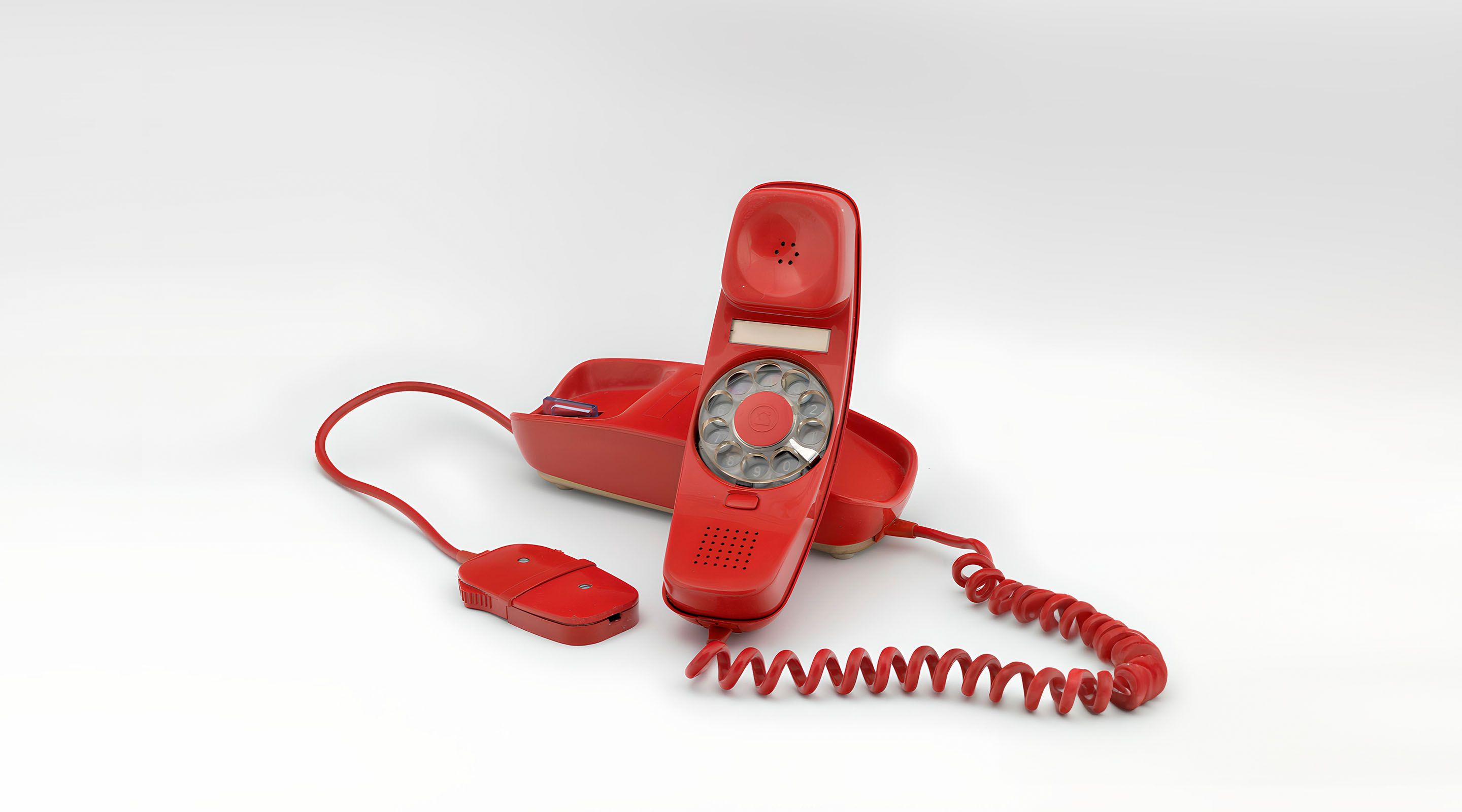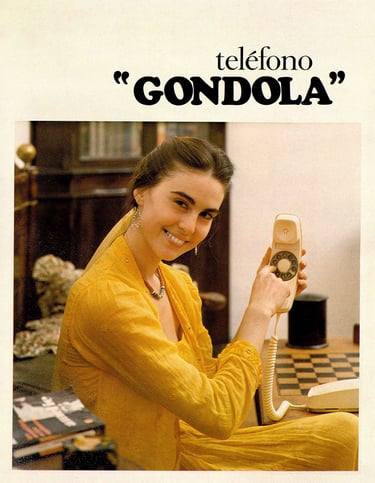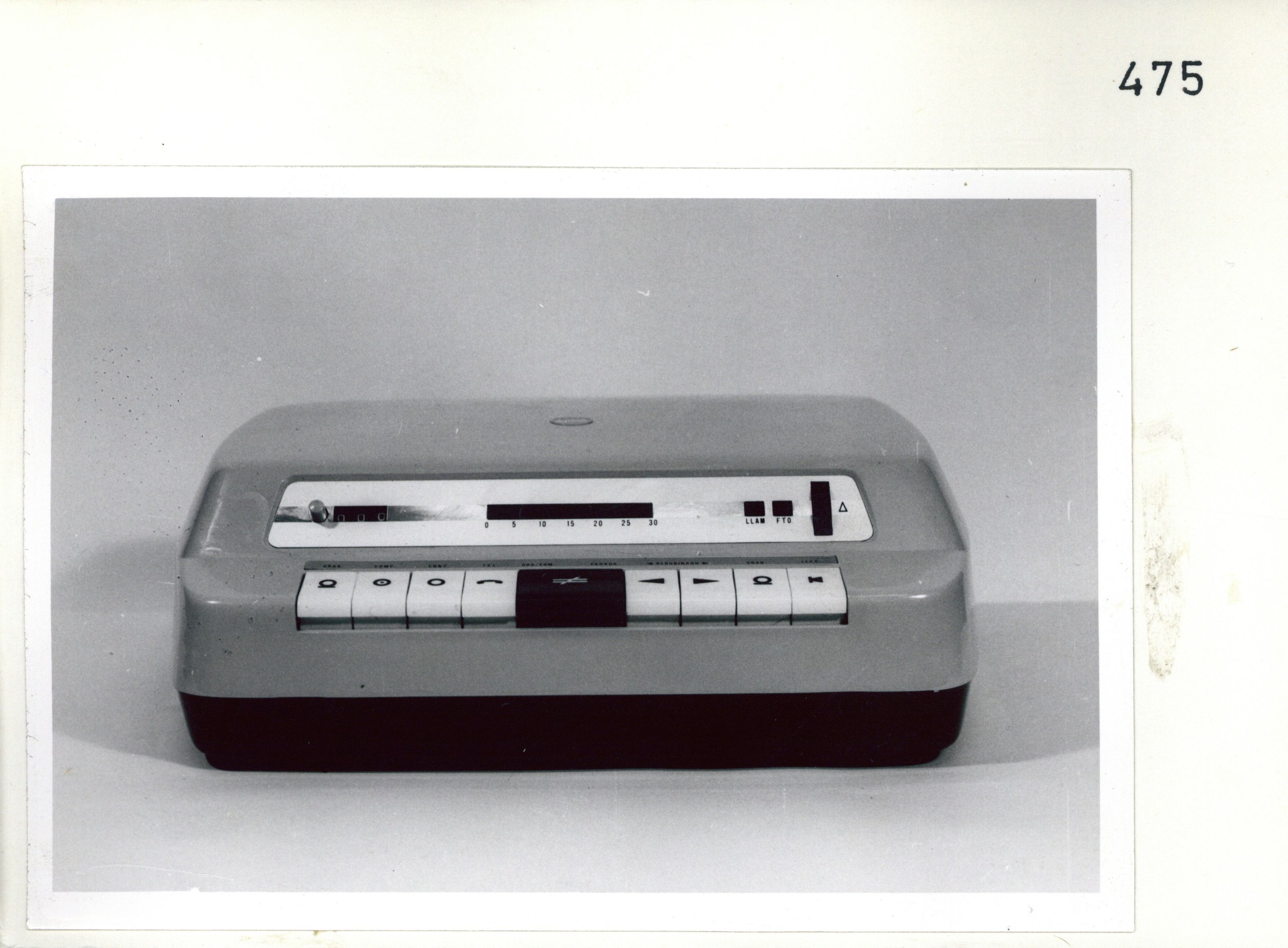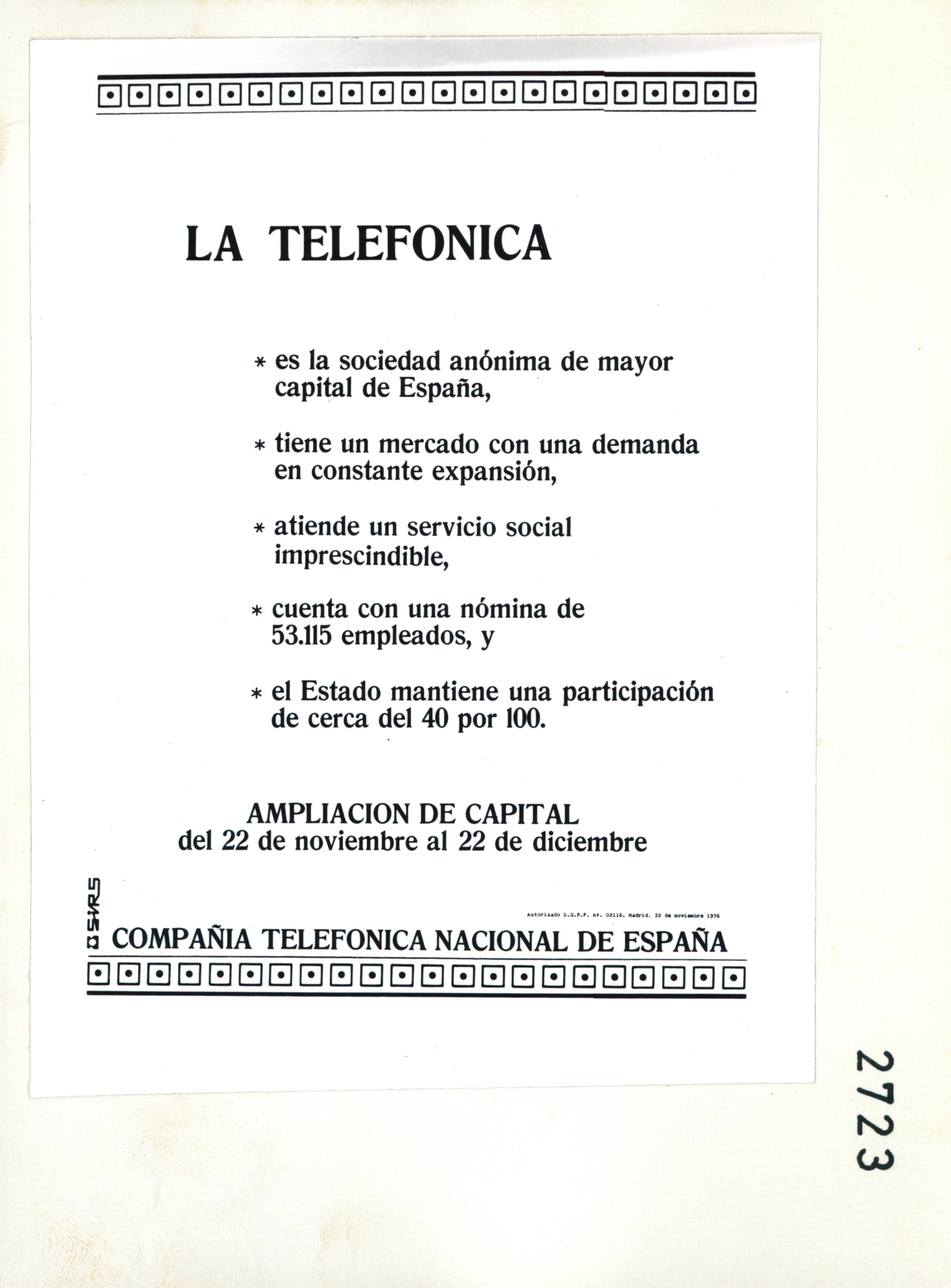
1968

It is the time of the Gondola, a modern, smaller and more functional terminal that swept Spanish households. Answering machines also burst onto the scene... "Leave your message after the beep...".
Finally someone can answer the phone in your absence
01
The evolution of the network and customers goes hand in hand with advances in the devices Telefónica installed in homes and offices. The late 1960s was the time of the Gondola, a very "pop" telephone with rounded shapes, a long cord and typically red or cream-coloured. Smaller and more compact than any before it, it also came with the revolutionary feature of having the dial - the "threaded" dial - inserted into the earpiece. It was not the only one. More vintage models remained on the market, such as the Estilo telephone, inspired by the old models, or the Satai, which was basically a Heraldo with a built-in switchboard. But in 1968, it became possible to get hold of a new device which, installed next to the telephone, is able to pick up the incoming call if, after a reasonable time, no "human" has been able to do so. The first answering machines arrived, the parents of the networked answering machine and grandparents of the mobile voicemail. Using a tape system, and after the familiar "beep-beep", the caller could leave a recorded message for the owner of the line to listen to on his return. The Sentinel model was sold - and advertised - together with the Gondola and was a real revolution in homes and offices. No call would go unanswered again.

"Telefónica needs capital"
02
In the autumn of 1968, a new capital increase was carried out in order to give a new direction to a business that is growing steadily and requires more and more investment. The company, which had been a resounding success with its shares thanks to the advertising campaigns with José Luis López-Vázquez and which had already popularised the 'Matildes', is once again using advertisements to invite small savers to participate in the capital increase. "The telephone companies offer an appropriate investment of your savings", the advertisement proclaimed, "with the guarantee of a constantly expanding company and the security of being able to convert them into money at any time you wish". The idea of being able to participate as an owner in that company full of modernity and future made Telefónica and its 'Matildes' the favourite vehicle for small savers in Spain and reinforced it as the company with the most minority shareholders in the market.

Do you have doubts about what happened?
Ask Aura